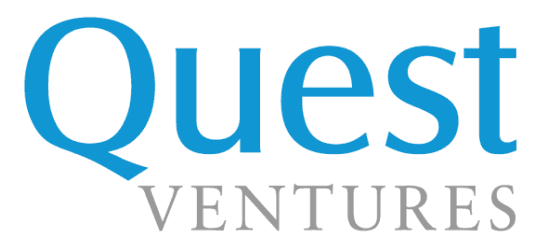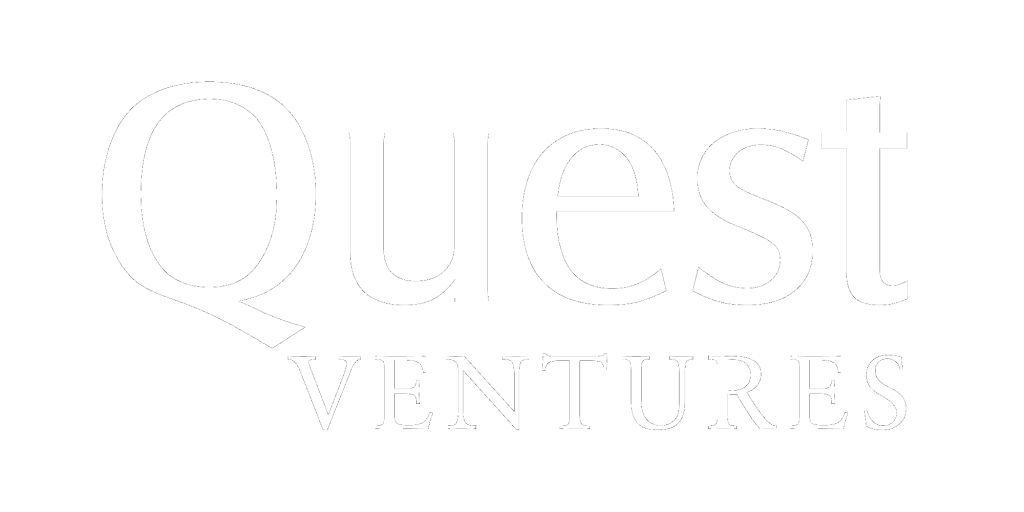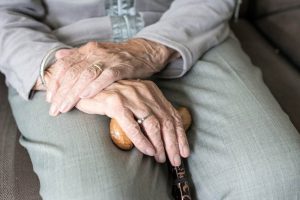A huge pot of gold can be found in the silver economy globally and in Asia, this article identifies the key opportunities for venture capitals.
The opportunities in the silver economy are manifesting more visibly globally and in the Asia Pacific region.
By 2025, the ageing population in the Asia Pacific will reach 600 million, potentially accounting for US$4.56 trillion. The markets ageing most rapidly in the Asia Pacific include China, Singapore, Thailand, Malaysia and Vietnam.
With the pandemic aggravating the existing ageing issues, there will be great potential for ageing technologies and innovations to grow and scale. We believe there is a huge pot of gold to be found in the silver economy globally and in Asia.
Through intensive research on the silver economy and correspondence with the Quest Ventures team, Zacchaeus Chok, a Quest Ventures Fellow, identified key opportunities for venture capital in the article below.
Zacchaeus Chok was attached to Quest Ventures through the Reactor Venture Scout Program.
===
The combination of longevity and a decline in birthrate engenders a pressing economic and social need for innovation. Although population ageing poses a double whammy to public spending and productivity, a technology-driven silver economy ecosystem is poised to meet the unique demands of an ageing population.
The reward for being the first to capture the sunrise marketplace will be huge, with the Asia Pacific’s silver economy potential projected to reach US$4.56 trillion by 2025. Boasting a silver economy potential of over US$500 billion, Singapore, Japan, and Australia are Asia Pacific’s top three markets.
The demographic shift presents two sides: a growing market segment for investors and a potential liability for governments. In turn, public and private sector investments in supporting seniors will increase.
Opportunities in the silver economy
Senior citizens have long been ignored by venture capital money. Yet, seniors will account for over 22 per cent of the population in the Asia Pacific by 2050 and entrepreneurs will be keen to cash in.
Investment opportunities span a wide range of industries, including housing, food, tourism and transport, with healthcare-related products featuring strongly.
Businesses need a strong understanding of the lifestyle aspirations and healthcare goals of seniors in order to successfully court the region’s 600 million senior citizens.
Building-integrated care solutions through telemedicine
The incoming class of senior citizens are likely to be more well educated, affluent and tech-savvy than their parents. For Singaporean residents aged 75 and over, smartphone usage grew from 41 per cent in 2019 to 60 per cent in 2020, along with an increase in internet usage.
At the same time, the adoption of digital services among seniors has sharply risen with COVID-19. Older patients can now book medical appointments online and have their medications delivered to their doorstep, rather than go to the clinic.
With senior citizens demanding greater accessibility, affordability, and personalisation in healthcare, the way healthcare is delivered could benefit from decentralization. Digital technology improves the affordability of previously inefficient care delivery practices, such as home-based urgent care, hospital-at-home model and virtual primary care.
Homage, which recently closed its US$30 million Series C funding in late 2021, uses a matching engine to connect families with caregivers and therapists.
Investor sentiment in healthtech has reached record levels in Southeast Asia, with deal value has grown more than four times since 2017. Deals in the care delivery vertical represent the largest portion of healthtech deal values, with significant growth in digital health solutions, online pharmacies and remote patient support.
Despite the progress made in telemedicine, challenges remain in managing the infrastructure and logistics, defining data collection standards and coordinating medical equipment needs.
IT can play a central role in overcoming the fragmented nature of caregiving
The rapid ageing of the population has resulted in increased pressure on health care delivery arrangements. Even though the value of preventive and promotive care has been given more weight, remarkable fragmentation in patient-centred care for the elderly persists.
For example, the patient referral procedure is locked in archaic data management systems and in some cases, paper-based record cards. When patients move to other facilities, re-evaluations are duplicated, causing healthcare professionals to spend unnecessary time and money.
Volunteer management is another area where the consolidation of services results in significant social impact. For example, SG Assist provides timely and affordable assistance to dependents at home through a digitally crowdsourced Community Responder network.
By streamlining the caregiving and volunteering sector through digital processes, a generation of tech-enabled social enterprises is paving the way for greater efficiency in the care sector.
In addition to mobile and web technology, several Blockchain healthcare start-ups have emerged in Singapore, addressing health analytics, data privacy, and insurance issues.
MediLOT uses blockchain technology to securely store patients’ health records while Hearti Lab uses the same technology for policy agreements, smart contracts and risk management.
However, many healthcare providers in Southeast Asia are still reluctant to share data or transition to cloud services. Besides Singapore, other governments in the region have been spending less on healthcare.
There remains significant work in integrating real-time patient data, defining standards, ensuring the interoperability of patient record systems and building security infrastructure.
Fortunately, there are signs of a greater governmental push to adopt technology in the near future, with the Philippines and Thailand governments introducing measures to incorporate technology into legacy systems.
Widespread adoption of assisted living devices
Cutting-edge wearable technologies supported by AI and the Internet of Things, alongside fitness monitoring devices, are gaining steam among senior citizens, caregivers and community healthcare providers.
In the inaugural Healthcare Open Innovation Challenge launched by Enterprise Singapore in 2020, several innovative solutions to prevent falls among seniors and promote adherence to prescribed medication regimes were presented.
Singapore-based Longway AI designed a solution to predict and prevent falls while IoT startup EloCare developed a smart pillbox solution to promote medication compliance and traceability.
With more seniors wanting to live autonomous and dignified lives without burdening their caregivers, assisted living devices and the wearable technology markets present major investment opportunities.
Challenges in the silver economy
Social entrepreneurship is an important linkway to developing the silver economy. Early-stage social enterprises are “catalytic innovators” that produce disruptive innovations outside of established corporations and bureaucracies, solving pressing social problems like our ageing population.
Since they carry significantly higher risk, they complement the low-risk appetite of government units. There are numerous examples of how early impact can lead to large scale adoption and system-changing impact, such as Indonesian health tech startup Halodoc whose digital platform services were recently tapped by the Ministry of Health to facilitate coronavirus vaccinations.
Young entrepreneurs are interested in creating products designed for senior citizens with needs unique to them but face numerous barriers to entry pertaining to talent, insight, distribution and capital.
Removing barriers to entry and silver marketplace growth
The silver ecosystem is enabled by the right type of funding and capability building at every stage. Even though there exists significant government funding in the social sector, innovation capital is typically disbursed in limited amounts e.g., philanthropies awarding small start-up grants.
In the earlier stages, philanthropic grants offer capital to seed promising business ideas. Private impact investors and venture philanthropists source, develop and optimise these promising businesses by providing systematic organisation-building support. Successful social programmes with a track record are scaled further by the government and NGOs.
While wealth owners are on the lookout to apply their assets toward more social causes, capability-building support is equally important to support innovation. Like venture capitalists, impact investors contribute their networks and expertise to nurture a new generation of social enterprises.
Social impact has largely focused on leveraging the skills and capabilities of the ICT industry but there is considerable potential to transfer skills, networks, and infrastructure in the venture capital ecosystem to the world of social impact.
No clearly defined playbook for silver economy startups
The term “Silver Tsunami” captures the unique nature of this demographic shift, and investors have only just begun to take notice. Developing active-ageing products aimed at the elderly is not a mainstream idea.
Of the 204 digital health startups registered in Singapore in 2022, only a small fraction develop eldercare-centric products.
Unlike e-commerce start-ups with clearly defined marketing playbooks, many investors still have the perception that seniors are not tech-savvy and that the total addressable market for senior-focused digital technology is limited.
Achieving scalable social impact hinges on a sustainable business model; silver social enterprises have to consider who is their target customer and how will they pay for the product. Overcoming perception challenges, social enterprises also need to consider how to position their technology products as simple as possible.
Golden dividends in a silver economy
The full potential of the silver economy is yet captured by investors and entrepreneurs. Seen differently, longevity is a macro tailwind behind the digitalisation of healthcare, the consolidation of caregiving and the proliferation of emerging technologies like blockchain.
These step changes in senior-centric healthcare are here to stay and investors are already paying attention to hot spots like telemedicine, wearable devices and patient analytics.
Small is beautiful, but the scale is necessary. Early-stage social enterprises are entering a fast-forming tech-enabled silver marketplace in Singapore, where novel ideas can be tested before expanding to larger markets in Japan and China.
Provided the right type of funding at the right stage, start-ups in the silver economy can optimise their business models for a growing consumer class and reap the dividends of a maturing silver market.
This post first appeared on e27.




